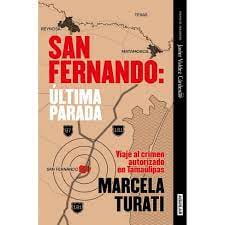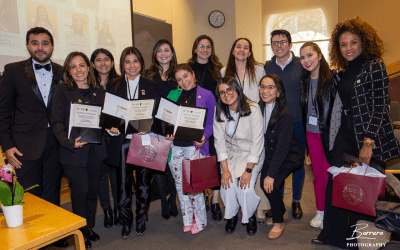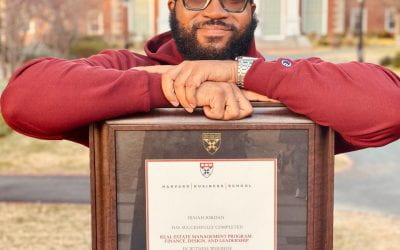A Review of San Fernando: Última Parada, Viaje al crimen autorizado en Tamaulipas
One of Mexico’s best investigative journalists, Marcela Turati, takes readers to terrorized and traumatized San Fernando, a town known for dozens of mass graves, and exposes the depths of criminal brutality and official corruption that hid the bodies and the truth for years. Turati aptly describes the mass killings of migrants and others pulled from buses headed to the Texas border as crimen autorizado, authorized crime, rather than simply organized crime.
She’s drawn into the story after a reporting trip to the border city Matamoros in 2013 where Turati visited a morgue and viewed some of the nearly 200 bodies unearthed from dozens of clandestine graves. This was the second discovery of a mass murder in San Fernando. The first were the 72 migrants found in 2011.
After returning to Mexico City, Turati tells a colleague, “my soul was detained at a checkpoint.” Military checkpoints or retenes are common in Tamaulipas and other states ravaged by violence, especially along the border.
It’s a powerful image. I’ve driven through those checkpoints manned by soldiers or federal police on the way to and from stories. I understand the inability to forget the horrors and the heartache of the murdered and missing in Mexico. As a journalist, I’ve spent years covering the U.S.-Mexico border, the bloody fight for lucrative smuggling routes, the massacres and the countless migrants who run the gauntlet to reach the United States. Some seek to escape violence at home, others rush toward jobs waiting for them, and others hope to reunite with relatives. I also know the frantic and often futile search of families whose loved ones never arrive.

San Fernando: Última Parada, Viaje al crimen autorizado en Tamaulipas by Marcela Turati (Penguin Random House, August 2023, 419 pages)
Turati’s book opens with short dispatches along the route bus from central Mexico to the border with Texas. It’s is a well-worn path that in this case led to a trap in San Fernando.
The bodies unearthed in the town about 86 miles from the Texas border raised troubling questions when they were discovered. How could so many buses arrive at their destination empty? What about the piles of unclaimed luggage? What happened to all those passengers?
Turati’s book is a search for answers. The dead did not remain silent. She anonymously received a thumb drive with detailed forensic information and images of the murder victims, some with faces frozen in a last painful scream.
The prologue offers readers a roadmap of her exhaustive investigation into the killings detailed in her book. It’s divided into two sections. Turati warns the first part is hard to read. It delves into the crimes, impunity and broken bodies dumped in mass graves.
The second part delivers on her assertion that this is not only a story about a tragedy. “The bonds of love and solidarity woven around those deaths” are also demonstrated.
The families who refuse to forget are the backbone of the book. “Within the ashes of the horror and catastrophe rise women and organizations of victims’ relatives, often led by women to rewrite the stories, humanizing with tenderness, valor and dignity to give them another ending…”
Turati interviewed relatives of those killed as well as the few accused in the crimes. Local police officers were among those implicated.
She’s honest about how tough it is to report and investigate the mass murder especially when many of those with answers still live in San Fernando, a town where neighbors helped carry out the killings. “People edit their own memories,” she writes because of fear or as a survival mechanism to cope with the horror and trauma. Turati describes the mass graves as “an extermination site.”
She says the book is fragmented by design and cautions readers should not reach quick conclusions in trying to identify specific people by details. Turati explains her reporting process seeks to reveal as much as possible but also protect those brave enough to speak. “What can I publish? What should I remove?” How can I mention something or someone without putting them at risk?” were frequent questions the author asked.
The deadly consequences were evident. A mother who told her she had a map of clandestine graves and a list of the disappeared in San Fernando was murdered before Turati could meet with her.
The other challenge is clear: authorities intentionally hide the truth. Turati recounts a mother who concludes the government is not searching for her missing son because “‘if they search, they will find themselves. The truth will make them culpable.’”
The narrative could have benefited from including more about the limited response of the U.S. government in the face of the atrocities. A declassified report from the U.S. Embassy in Mexico shows officials knew about the deteriorating conditions and dangers for migrants crossing through regions controlled by transnational criminal organizations (TCOs). According to the 2011 report,“the situation has worsened in recent years due to pervasive TCO control of routes and crossings. TCOs act alternately as paid facilitators, extortionists, kidnappers and traffickers.”
The book is especially relevant now at a time when the United States is relying more heavily than ever on Mexico as a partner it praises for helping manage the record number of migrants making their way through the neighboring nation to the border. Human smuggling has become as important as moving drugs for criminal organizations and the profits are corrupting countless officials along the way, as migrants have recounted to me about their perilous journey through Mexico.
I confess I dreaded reading this book. I did not want to dredge up my own horrible memories of the “drug war” in Ciudad Juarez: the overpowering smell of death that permeated my clothes after a visit to the overcrowded morgue, the bloody crime scenes, the gruesome calling cards that included mutilated bodies hanging from overpasses, the multiple massacres. Cemeteries filled with fresh graves as the death toll rose. I remember reporting on one Dia de los Muertos where two families standing next to each other buried 14 year-olds gunned down in neighborhoods where they were cannon fodder for rival cartels.
But the book also reminded me of the strength and determination of so many relatives of the murdered and missing I met, mostly women, who refused to give up the search for the truth despite great personal risk.
“Everyone who searches for information about the deaths they want to erase is punished,” Turati writes.
That includes the author. Turati learned the government had spied on her and in a macabre twist she, along with human rights lawyer Ana Lorena Delgadillo, head of the Fundacion para la Justicia, and Mercedes Doretti, of the internationally recognized Argentine forensic team, were under investigation for “kidnapping and organized crime.” Turati credits both with helping with her investigative reporting.
While working on the book, she said she was often asked, “‘Why dig up more of these tragedies?’” San Fernando: Ultima Parada compels us not to look away or try to forget. This is not a story about the past, but the present and the possibility of a different future.
Turati writes,“When people take ownership of that memory, new paths emerge toward the longed-for justice.”
Angela Kocherga is an award-winning public radio journalist She covers both sides of the U.S.-Mexico border. She is an NPR contributor and serves as News Director at KTEP in El Paso, Texas.
More Student Views
Colombian Women Who Empower Dreams
English + Español
The verraquera of Colombian women knows no bounds. This was the message left with me by the March 30 symposium, “Empowering Dreams: 1st symposium in honor to Colombian women at Harvard.”
A Review of Born in Blood and Fire
The fourth edition of Born in Blood and Fire is a concise yet comprehensive account of the intriguing history of Latin America and will be followed this year by a fifth edition.
Resilience of the Human Spirit: Seizing Every Moment
In the heart of Chicago, where I grew up, amidst the towering shadows of adversity, the lingering shadows of generational demons and the aroma of temptation, the key to the gateway of resilience and determination was inherited. The streets of my childhood neighborhood became, for many, prisons of poverty, plundering, crime and poor opportunity.




